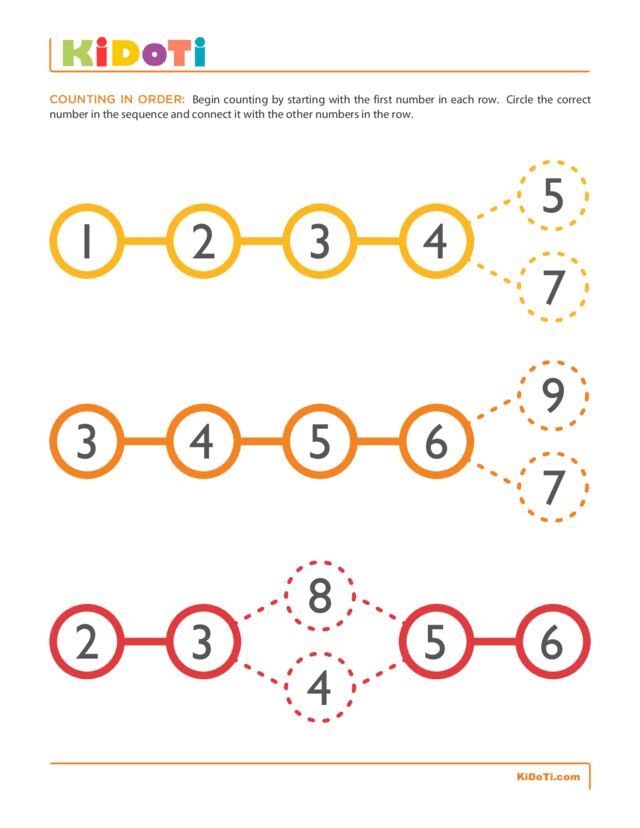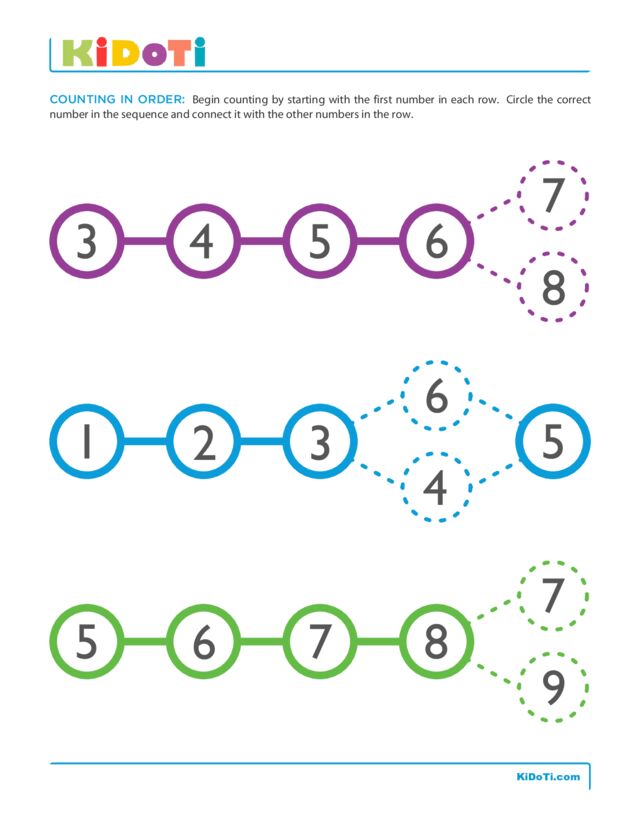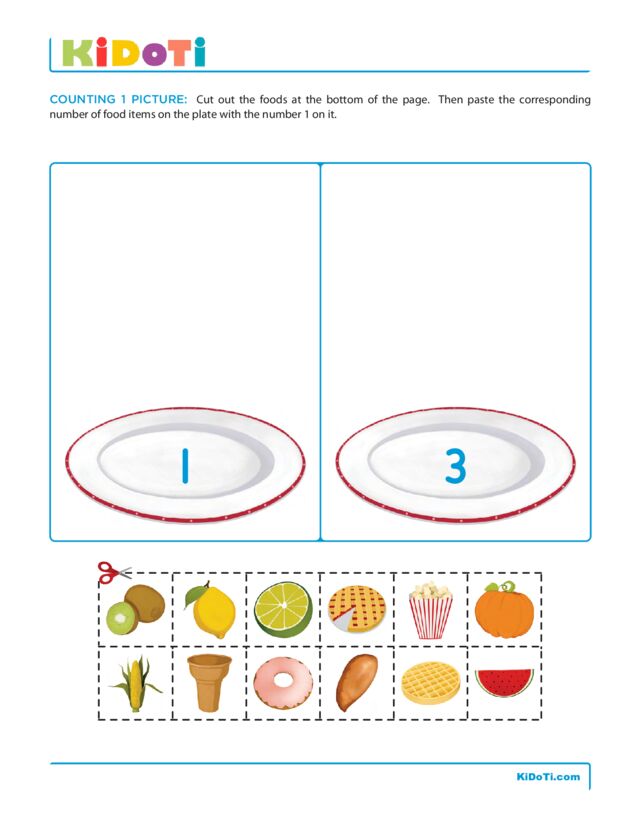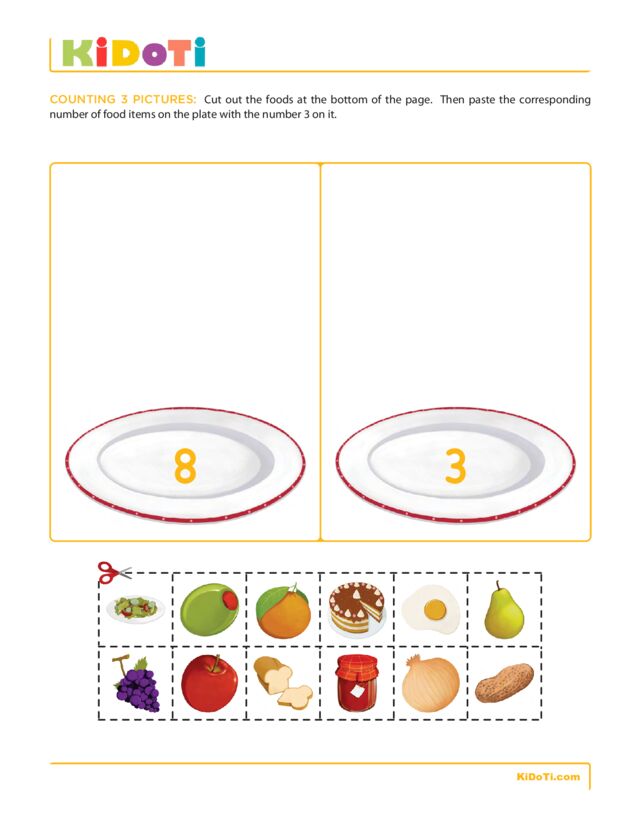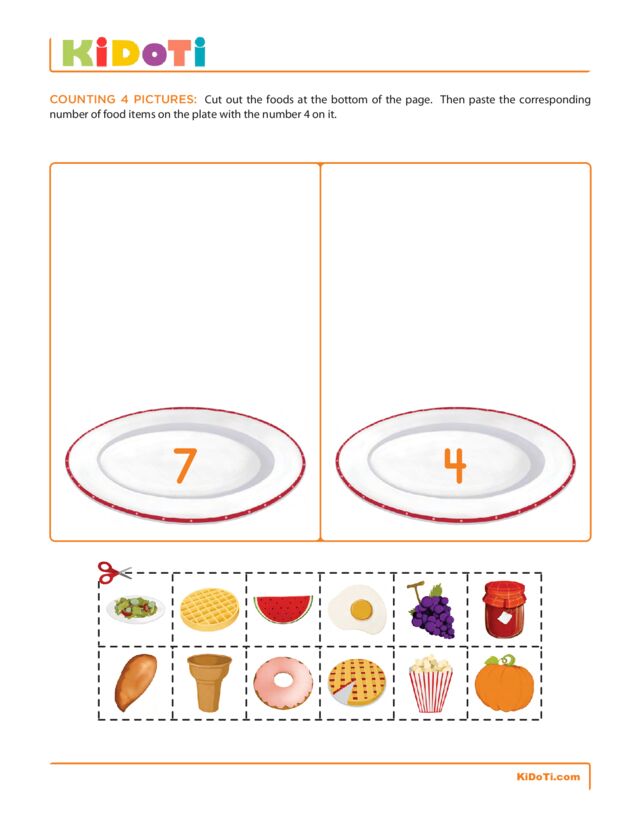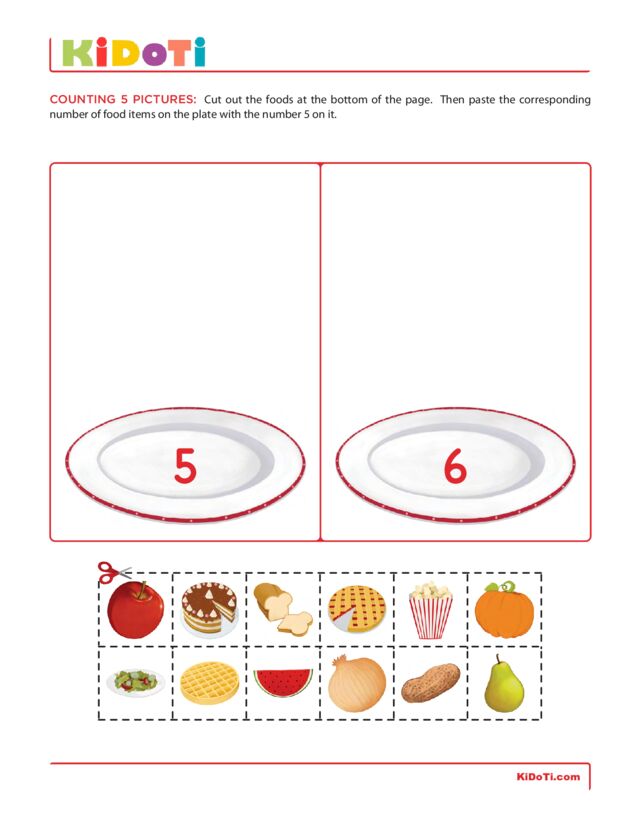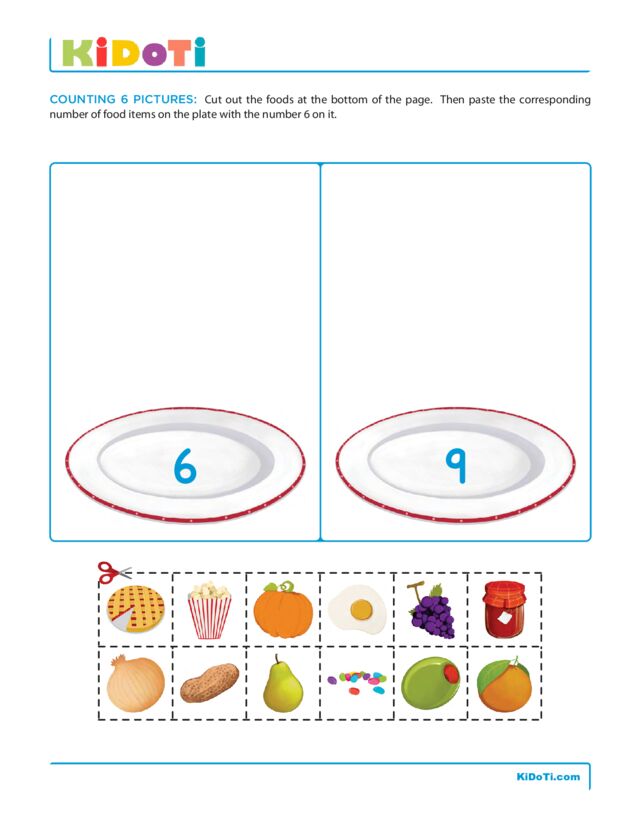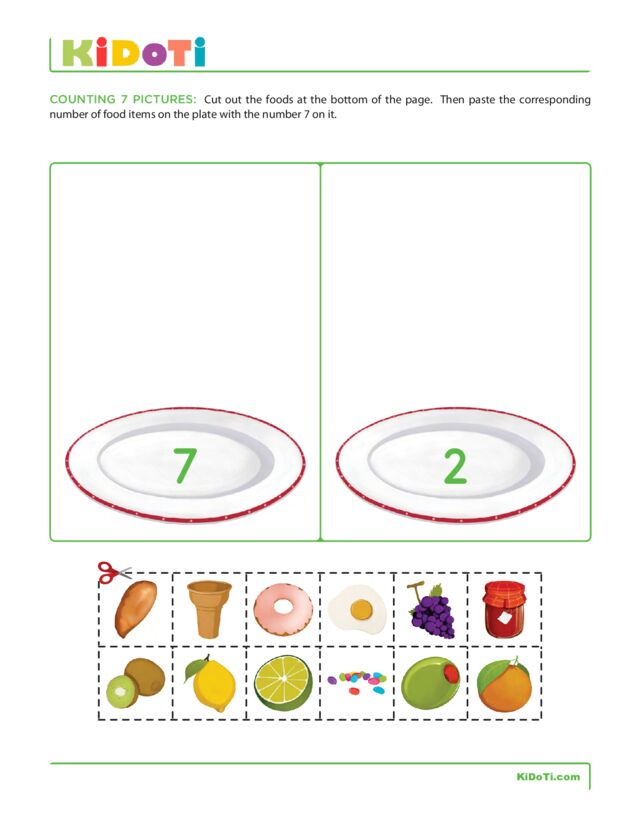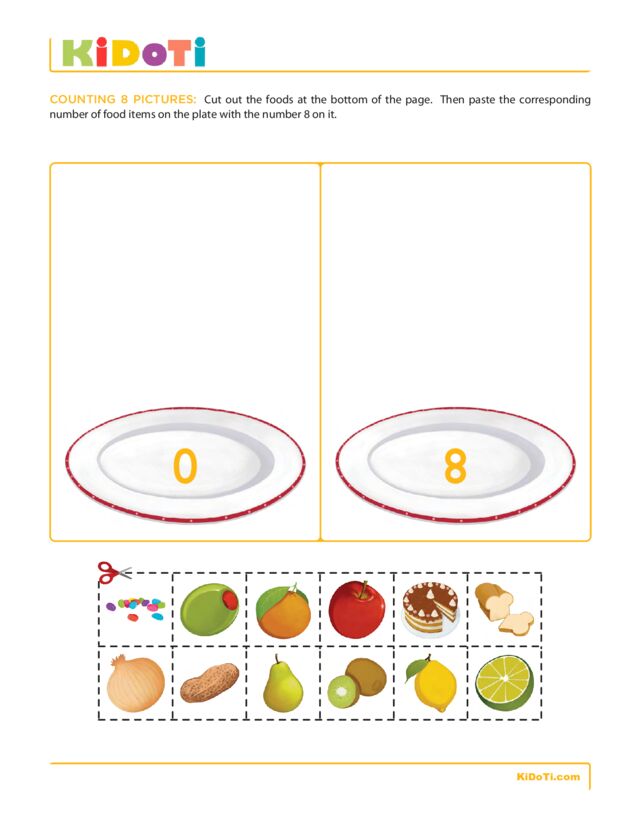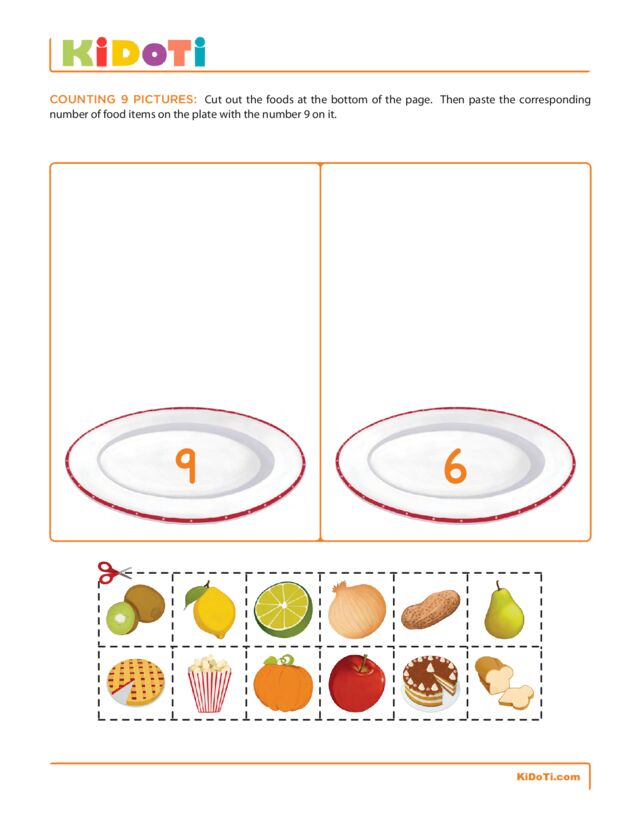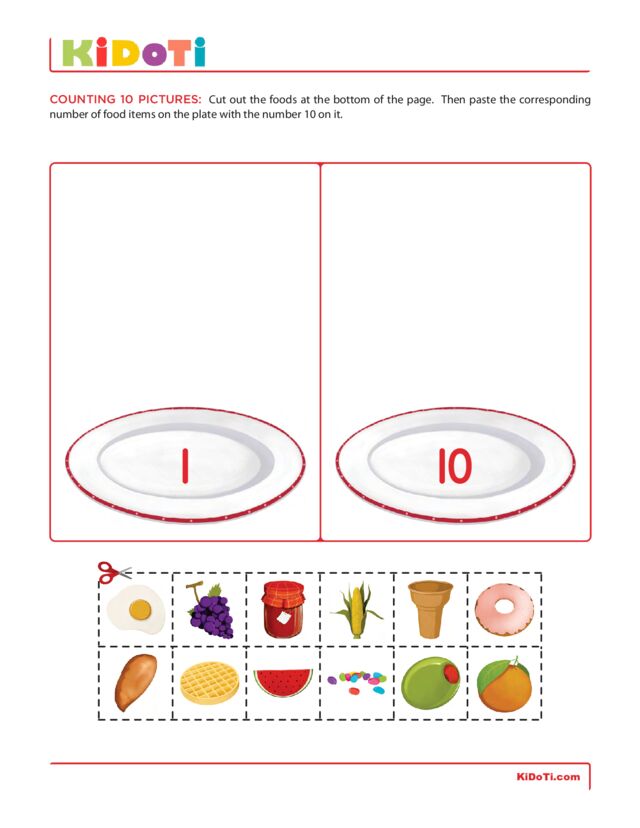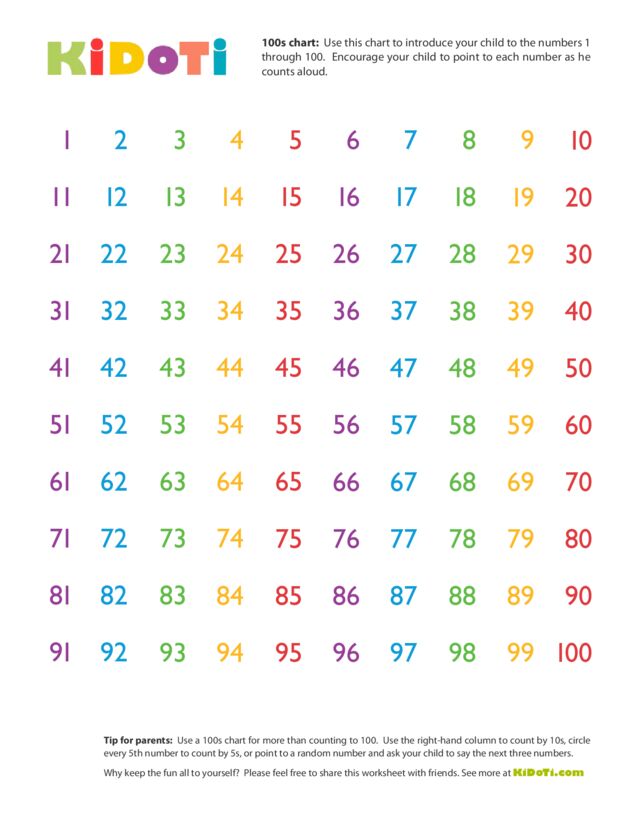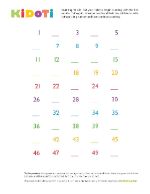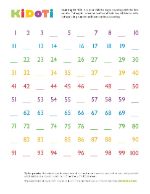Introduction to counting in order
Learning to count from 1 to 10, from 1 to 20, and from 1 to 100 are basic math skills for preschool and kindergarten children. Once children are comfortable with basic counting, they are introduced to “counting on.” Counting on involves being able to continue counting from any number, as opposed to restarting at 1 each time your child counts.
Counting in Order
Counting Pictures
Counting from 1 to 100
The importance of counting worksheets
Counting is the first and most basic math skill a child learns. Initially, children learn to count by ones from 1 to 10. Next children move on to counting from 11 to 20. Once children are comfortable counting from 1 to 20, the next big step is learning to count by 10s so that children can seamlessly count from 29 to 30 or from 39 to 40, for example.
Knowing the order of the numbers and being able to say them automatically requires exposure and practice, practice, practice – which is why counting worksheets are perfect for young children.
Extra tips for using the beginning counting worksheets
Before you show your child the beginning counting worksheets, ask him to practice counting aloud several times from 1 to 10. This will refresh his memory and reinforce the number sequence before he starts the counting worksheets. It is fine if your child counts from rote memorization without, for example, looking at each finger on his hands, one by one, as he counts.
As your child looks at each row of numbers on the beginning counting worksheets, ask him to point to the number in each circle as he says it out loud. When he reaches the point where he needs to select the next number, encourage your child to simply “continue counting” and say aloud the number that comes next. If your child struggles to say the correct number, consider covering up the two choices on each row and then ask your child to begin counting at the beginning of the row again. Until children understand the format of this worksheet, seeing two choices may be confusing and temporarily halt their counting. Once your child says the correct number, you can reveal the two number choices and he can trace over the dashed-line circle to select the number he just said.
If the multiple rows of numbers are confusing or overwhelming for your child at first, simply fold the paper to expose just one row of numbers at a time.
Help your child complete the missing number worksheets
On the intermediate worksheets, your child must write the missing number in the empty box. As an added challenge, the numbers on these worksheets go from 1 to 20.
Begin by asking your child to count aloud from 1 to 20 before he starts working on a missing number worksheet. This will allow him to practice counting by rote memorization, without worrying about associating each number he says with a printed number on the worksheet page.
When your child is able to comfortably count from 1 to 20, ask your child to look at the first row of numbers on the worksheet and point to each number as he counts out loud. When he comes to an empty box, direct him to first say aloud the missing number and then write that number in the empty box.
If your child says the correct number but is not confident writing it, you can help him in writing the number. You could lightly write the number in the box and then ask him to trace over your writing with a darker pen. Or, you can write the number on a small piece of paper for your child, and he can use that paper as a model while he tries to write the number in the box himself. With practice, your child will become comfortable writing the numbers on his own.
Helping your child practice counting to 50 and counting to 100
Once your child is comfortable counting from 1 to 20, he is ready to tackle the more challenging task of counting from 1 to 50 or counting from 1 to 100.
With the advanced counting worksheets, encourage your child to write the numbers if he can. If he is unsure of how to write the numbers (wondering, for example, if the number 15 is written with a one then a five or a five then a one), suggest that he look at the numbers on either side of the blank space for clues.
When children first learn to write numbers, it is not uncommon for them to switch the position of the numerals, writing 18 as 81, for example. Your child will naturally correct this mistake as he is exposed to more two-digit numbers.
What is a 100s chart
A 100s chart is a visual aid that helps children understand the order of the numbers from 1 to 100. It is an ideal way to show children a variety of math concepts because they can look at the numbers as well as directly see relationships between the numbers (which number is greater than another or the order of the numbers, for example).
Tips for introducing your child to a 100s chart
The simplest way to introduce your child to a 100s chart is by asking him to count aloud as he points to each number on the chart. Point out that the first number on the chart is 1 and the last number is 100. If the whole chart is a bit overwhelming at first, fold the page to reveal just a few rows at a time and ask him to begin counting. Once he begins counting, he will quickly realize that a 100s chart simply lists all the numbers from 1 to 100, in order, and is a handy aid when counting.
Activities to try at home to supplement the counting worksheets
- Count out loud to 20 while your child brushes his teeth. He’ll be listening because he will want to know when he can stop brushing! Or, say aloud the numbers from 1 to 20. As your do, periodically skip a number and challenge your child to catch your mistake and tell you which number you missed.
- Write the numbers 1 through 20 on small index cards and shuffle the cards. Ask your child to place them in the correct order from left to right. Then, call out a number and challenge him to pick the card with that number out of the stack as quickly as possible.
- Pick a number between 1 and 20, 1 and 50 or 1 and 100 and do not tell your child what the number is. Then, ask your child to guess the number you picked by having him say a number and then you can give a hint such as “higher” or “lower” to help guide him to the correct number.
- Have your child count how many steps it takes to get from one room to another or from the front door to your car. Then count how many hops or skips it takes to go the same distance. Once your child is comfortable with this game, you can encourage him to estimate the number of hops, skips, or steps it will take before he actually counts it out.
- Place two piles of beans, beads or pennies in front of your child and ask him which has more. Then ask him to count each pile to check his guess.
- When giving your child bite-sized snacks, let your child grab a handful and ask him to count each one to see how many he grabbed.
